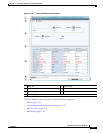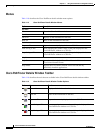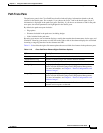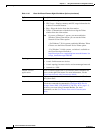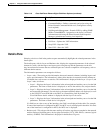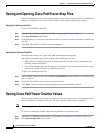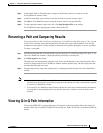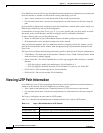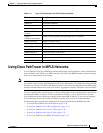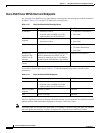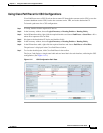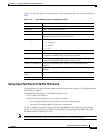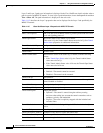
11-29
Cisco Prime Network 4.0 User Guide
OL-29343-01
Chapter 11 Using Cisco PathTracer to Diagnose Problems
Using Cisco PathTracer in MPLS Networks
Using Cisco PathTracer in MPLS Networks
You can open and view Cisco PathTracer information between service endpoints, such as an IP interface
that is attached to the VRF over an MPLS network. The LSP in the MPLS network is found according
to the cross-connect table of each router.
Note An LSP can be traced and displayed by Cisco PathTracer as part of an end-to-end tracing of a service;
for example, when viewing a path between one CE device and another. Cisco PathTracer traces the path
that goes over circuits or VLANs in the access networks. It also traces the LSPs between the VRFs going
through all intermediate devices such as CE devices, aggregation switches, PE routers, and core routers.
To view a specific path, you must specify an initial starting point, such as an IP interface; specifying a
destination IP address is optional. If the traced path (for example, a VC or VLAN) ends in a router,
Cisco PathTracer finds the next hop according to the destination IP address. If you select an endpoint,
Cisco PathTracer extracts the relevant IP address from this point and uses it as the destination.
The following topics provide more information on using Cisco PathTracer in MPLS networks:
• Cisco PathTracer MPLS Start and Endpoints, page 11-30
• Using Cisco PathTracer for CSC Configurations, page 11-31
• Using Cisco PathTracer for Layer 3 VPNs, page 11-32
• Using Cisco PathTracer for Layer 2 VPNs, page 11-32
• Using Cisco PathTracer for MPLS TE Tunnels, page 11-33
Tunnel Remote ID Remote tunnel identifier.
Tunnel ID Local tunnel identifier.
Tunnel Name Name of the subscriber and the tunnel identifier.
Session ID Session identifier.
Traffic > L2TPSession
Counters
Number of traffic packets passing through the L2TP tunnel.
Traffic <
L2TPSessionCounters
Number of traffic packets passing through the L2TP tunnel.
Tunnel Ctl Errors Number of control errors.
Tunnel State Tunnel state: unknown, idle, connecting, established, or disconnecting.
Session Type Session type: unknown, LAC, or LNS.
Peer Name Peer name.
Tunnel Remote IP Remote IP address of the tunnel.
Last Error Code Value of the last error code that caused the tunnel disconnection.
Session State Session state: unknown, idle, connecting, established, or disconnecting.
Remote Session ID Remote session identifier.
Table 11-11 Layer 2 Tab Information for L2TP Tunnels (continued)
Field Description



